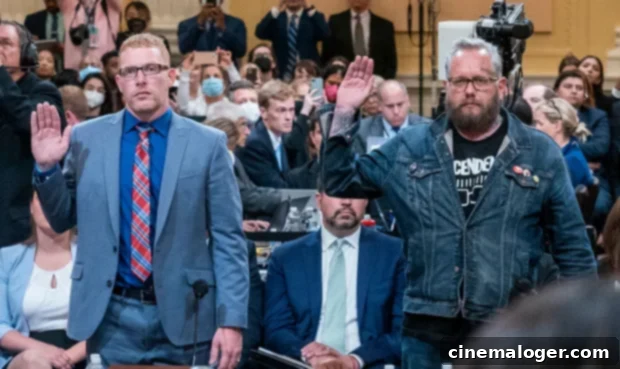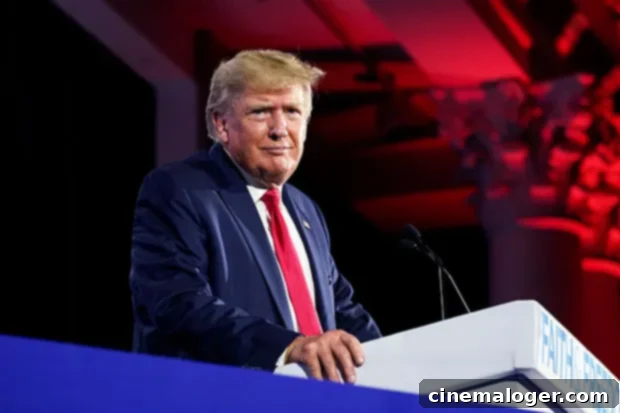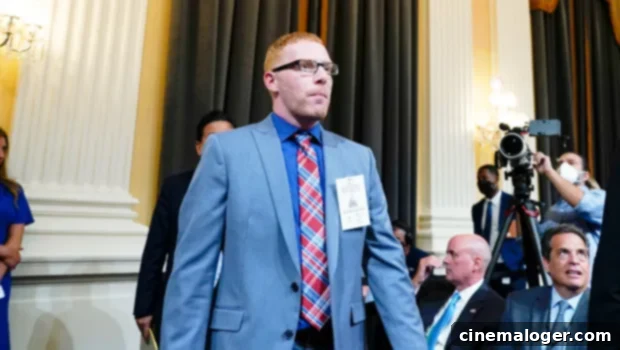January 6th Capitol Rioter Stephen Ayres Testifies: Regret, Trump’s Influence, and the Lingering Impact of Election Lies
The January 6th Select Committee hearings have continued to unravel the complex events leading up to, during, and after the attack on the U.S. Capitol. Among the most compelling testimonies presented was that of Stephen Ayres, a participant in the Capitol riot who openly expressed his deep regret and disillusionment. Ayres’ emotional account offered a unique perspective from someone directly involved in the insurrection, shedding light on the powerful influence of former President Donald Trump‘s rhetoric and the profound personal consequences faced by those who believed his baseless claims of a stolen election. His testimony underscored how critical moments, such as Trump’s delayed public message, could have potentially altered the course of that fateful day, and how the continued promotion of election falsehoods continues to sow division and fear for the future of American democracy.
During his testimony before the House Select Committee on Tuesday, July 12, Stephen Ayres, one of the individuals who breached the Capitol building on January 6th, revealed a significant turning point in his involvement. Ayres stated that he might not have participated in the breach if former President Donald Trump had issued his message calling for an end to the violence earlier in the day. He provided critical insights into his motivations for attending the rally that ultimately escalated into the violent assault on the Capitol. When questioned about his eventual departure from the scene, Ayres disclosed that it was Trump’s video message, urging his supporters to go home, that prompted him to leave the building. He emphasized that an earlier intervention from the then-president could have potentially prevented or significantly mitigated the attack.
Stephen Ayres on what made him leave the Capitol on January 6th: “Basically when President Trump put his tweet out. We literally left right after that…to me, if he would have done that earlier in the day…maybe we wouldn’t be in this bad of a situation.” pic.twitter.com/OGe0FVJAE9
— CSPAN (@cspan) July 12, 2022
Ayres elaborated on this crucial point, asserting that a more timely instruction from Trump would have compelled him to turn back sooner. “When President Trump put his tweet out, we literally left right after that,” he recounted to the committee. He further stressed the potential impact of an earlier communication: “To me, if he would’ve done that earlier in the day [at] 1:30. We wouldn’t be in this. Maybe we wouldn’t have been in this as bad of a situation.” This statement highlights the significant influence Trump held over his supporters and the missed opportunity for de-escalation that day. Ayres’ perspective offers a direct link between the former president’s actions, or lack thereof, and the unfolding events on January 6th, suggesting that the timing of his message was a critical factor in the duration and intensity of the Capitol breach.
Continuing his testimony, Ayres described Trump’s video message as a definitive turning point in the Capitol invasion. “As soon as [the video had] come out. Everybody started talking about it and it seemed like it started to disperse,” he explained, noting the immediate effect on the crowd. He further observed, “Once we got back to the hotel room, we’d seen that it was still going on but it definitely dispersed a lot of the crowd.” This firsthand account provides valuable insight into the dynamic within the rioters, illustrating how quickly direct communication from their perceived leader could shift their actions and motivations. The belated call for peace, however, allowed hours of chaos and violence to unfold, deeply impacting the Capitol complex and American democracy.
The personal ramifications of Ayres’ involvement in the January 6th attack have been severe and far-reaching. Since that day, he has lost his job, and was compelled to sell his home, despite many of the initial charges against him being dismissed. He openly lamented, stating that the event “changed my life, not for the good.” A palpable anger was evident in his testimony as he spoke about Trump’s persistent promotion of the “Big Lie” regarding election fraud. Ayres expressed a profound sense of betrayal, having “hanging on every word he was saying,” and conveyed deep concern for the future. “You’ve got people still following and doing that,” he warned, articulating his fear that the next election cycle could lead to a similar dangerous path. “We just don’t know,” he concluded, highlighting the uncertainty and potential for repeated political instability fueled by ongoing disinformation campaigns. His personal story serves as a stark reminder of the devastating consequences of political rhetoric unchecked by truth and accountability.
Earlier in his powerful testimony, Stephen Ayres recounted his journey to Washington D.C., a decision he made after encountering calls to action on social media. At that time, he admitted, he fully believed Trump’s unsubstantiated claims of widespread election fraud. However, Ayres candidly stated before the committee that he no longer holds those beliefs, marking a significant shift in his perspective. He also reflected on the hypothetical impact of Trump not having spread these election lies, suggesting it might have fundamentally altered his decision to travel to Washington. “Who knows? I may not have come down here,” he pondered. Ayres further clarified that his initial intention was not to breach the Capitol building. He explained that it was only after hearing Trump’s inflammatory speech on the morning of January 6th that he felt compelled to join the march to the Capitol, driven by the former president’s explicit encouragement.

Adding another layer of crucial context to the committee’s investigation, former Oath Keepers spokesman Jason Van Tatenhove also delivered in-person testimony. Having disassociated himself from the organization prior to the Capitol riot, Van Tatenhove provided invaluable background information on the far-right extremist group. His testimony offered insights into the Oath Keepers’ ideology, organizational structure, and their escalating anti-government rhetoric, helping the committee understand the motivations and planning behind some of the more organized elements of the January 6th attack. His insider perspective, free from direct involvement in the riot itself, served to highlight the long-term radicalization process that contributed to the violent events of that day.
The hearing featuring Ayres and Van Tatenhove followed the highly impactful and widely reported testimony of Cassidy Hutchinson, a former aide to then-White House Chief of Staff Mark Meadows. Hutchinson’s testimony proved to be a pivotal moment in the investigation, as she revealed many explosive details from the inner circle of the White House staff surrounding Trump during the rally and the subsequent invasion of the Capitol on January 6th. Her revelations painted a disturbing picture of the former president’s mindset and actions. Notably, she disclosed that Trump had allegedly instructed the Secret Service to cease requiring his supporters to pass through metal detectors before entering the Ellipse for his speech, aware that many were carrying weapons. Furthermore, Hutchinson testified that Trump became enraged and lunged for the steering wheel of his presidential vehicle when his security detail refused to transport him to the Capitol alongside the rioters. Her chilling quote, “The President said something to the effect of ‘I’m the F-ing president. Take me up to the Capitol now,” vividly illustrated his aggressive desire to join the mob, even as the violence unfolded. These revelations highlighted the extreme measures Trump was willing to take and his disregard for the safety protocols and the rule of law, further solidifying the committee’s narrative of presidential culpability.

The earlier sessions of the January 6th Select Committee had already brought to light significant details that, while perhaps previously rumored, gained concrete confirmation and depth through sworn testimonies. These sessions extensively documented how former President Trump exerted immense pressure on various local politicians and officials within the Justice Department in a desperate and unprecedented attempt to overturn the legitimate results of the 2020 election. The hearings featured a series of former members of Trump’s own staff, including high-ranking officials, who vehemently pushed back on his unsubstantiated claims of widespread election fraud. Most notably, former Attorney General William Barr testified that he had repeatedly informed Trump that his allegations of election fraud were “complete nonsense” and lacked any factual basis. These testimonies collectively painted a clear picture of a president actively working to subvert democratic processes, despite being advised by his closest legal and governmental advisors that his claims were false.
Beyond the political machinations and high-level testimonies, the January 6th hearings also profoundly illuminated the human cost and tangible impact of Trump’s relentless propagation of lies about voter fraud and a “stolen election.” The committee presented heart-wrenching accounts from ordinary citizens whose lives were upended by these falsehoods. A particularly moving testimony came from a Georgia election worker and her mother, both of whom detailed receiving a barrage of horrific death threats and enduring intense harassment simply for performing their civic duty during the election. Their experience showcased the dangerous real-world consequences of baseless conspiracy theories. Furthermore, a brave Capitol police officer recalled the graphic and terrifying scenes of fighting back against the insurrectionists who violently invaded the building on January 6th, driven by the very same lies about election fraud. These testimonies provided a stark and emotional reminder that the political rhetoric and actions of leaders have immediate and devastating effects on the lives of everyday Americans, profoundly impacting their safety, livelihoods, and peace of mind. The committee’s work, through these diverse narratives, sought to expose not only the mechanics of the attack but also its deep and lasting scars on individuals and the nation’s democratic fabric.
The cumulative impact of testimonies like Stephen Ayres’ offers critical insights into the January 6th Capitol attack. His personal journey from a fervent Trump supporter, believing in election fraud, to a regretful participant disillusioned by the former president’s continued dishonesty, serves as a powerful cautionary tale. The committee’s relentless pursuit of truth through various witnesses, from rioters to White House insiders and law enforcement, continues to build a comprehensive picture of the events of that day and the factors that led to it. The ongoing threats posed by election misinformation, as highlighted by Ayres’ fears for future elections and the harrowing experiences of election workers and police officers, underscore the critical importance of holding accountable those who propagate such dangerous falsehoods. The January 6th Select Committee hearings are not merely an investigation into a past event; they are a vital effort to safeguard the integrity of democratic processes and prevent similar assaults on the foundations of American governance in the future.
The unfolding narrative from the January 6th hearings paints a vivid picture of the fragility of democratic institutions when confronted with deliberate disinformation and political extremism. Stephen Ayres’ testimony provides a human face to the thousands who were drawn into the vortex of misinformation, believing they were acting patriotically when, in reality, they were participating in an attack on their own government. His regret and frustration with Trump’s ongoing “Big Lie” reflect a broader segment of the population grappling with the fallout from political rhetoric that prioritizes power over truth. The committee’s diligent work, bringing forward testimonies from diverse individuals, from the directly implicated to the deeply affected, emphasizes the collective responsibility required to uphold democratic norms. The insights gleaned from these hearings serve as a crucial educational tool, aiming to inform the public and ensure that such an assault on the peaceful transfer of power is never repeated. The struggle for truth and accountability remains paramount in the ongoing effort to heal a divided nation and fortify its democratic future.
